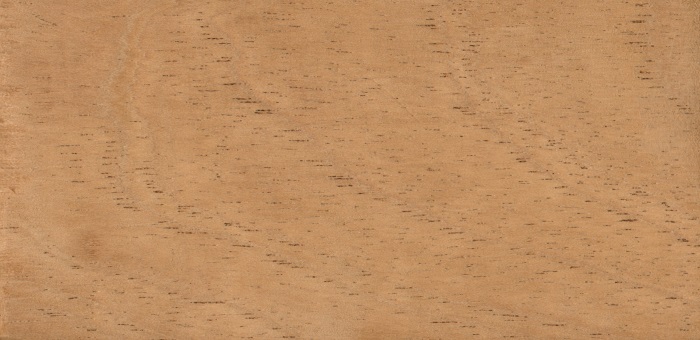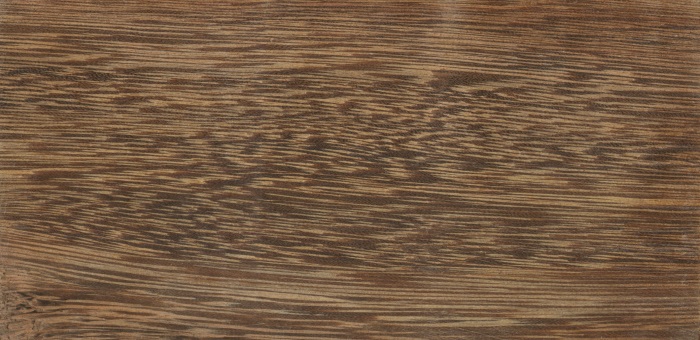Bolletrie (Massaranduba)
| Commercial Name(s): | Bulletwood, Massaranduba |
| Other Name(s): | Macaranduba, Paraju, Nispero, Beefwood, Balata Franc, Balata Rouge, Quinilla Colorada, Balata, Bullet Wood, Maparajuba, Balata Gomme, Bois Abeille, Pamashto, Bolletrie |
| Botanical Name: | Manilkara huberi, Manilkara bidentata, Manilkara spp, |
| Botanical Family: | Sapotaceae |
| SBB Code: | BOL |
Profile
The wood is dark red brown with purplish shades. The sapwood is clearly demarcated. The grain is straight and the texture is fine. Density at 12 % moisture content: 1.10 g/cm3.The blunting effect is fairly high; peeling is not recommended or without interest and slicing is reported to be good. Requires power. Nailing is good but pre-boring is necessary. Gluing is correct for interior only. Gluing requires care (very dense wood). It dries slowly and surface drying prior to kiln drying is recommended. Risks of cracks more or less important according to specific gravity. Massaranduba is very durable to fungi and is durable to dry wood borers; sapwood demarcated (risk limited to sapwood). Due to its high specific gravity and hardness, this species naturally covers the biological hazard class 5 (end-uses in marine environment or in brackish water).
Massaranduba can be used for several applications:
• interior: e.g. sculpture, tool handles, industrial or heavy flooring, sliced veneer, stairs, furniture
• exterior: e.g. ship building, wood frame house, bridges, posts, stakes, sleepers, heavy carpentry
In Brazil, Massaranduba is used for pulpwood.
Typical use
Stakes, Stringed instruments (bow), Hydraulic works (fresh water), Sleepers, Sliced veneer, Ship building (planking and deck), Sculpture, Turned goods, Industrial or heavy flooring, Stairs (inside), Bridges (Parts not in contact with water or ground), Bridges (Parts in contact with water or ground), Poles, Wood frame house, Arched goods, Tool handles (resilient woods), Shingles, Heavy carpentry, Current furniture or furniture components.
Technical Information
Trees Size: 30 – 46 m
Trunk Diameter: 60 – 120 cm
Monnin Hardness:: 12.9
Crushing Strength (Mpa): 81 -97
Basic Specific gravity: 1.05 – 1.15
Density (g/m3): 1.1
Texture: Fine
Static bending strength: 170
Modulus of elasticy (Mpa): 24410
T/R Ratio: 1.3
Finish: Excellent
Stability: Poorly stable
Get more technical information about Bolletrie (Massaranbuda)…


